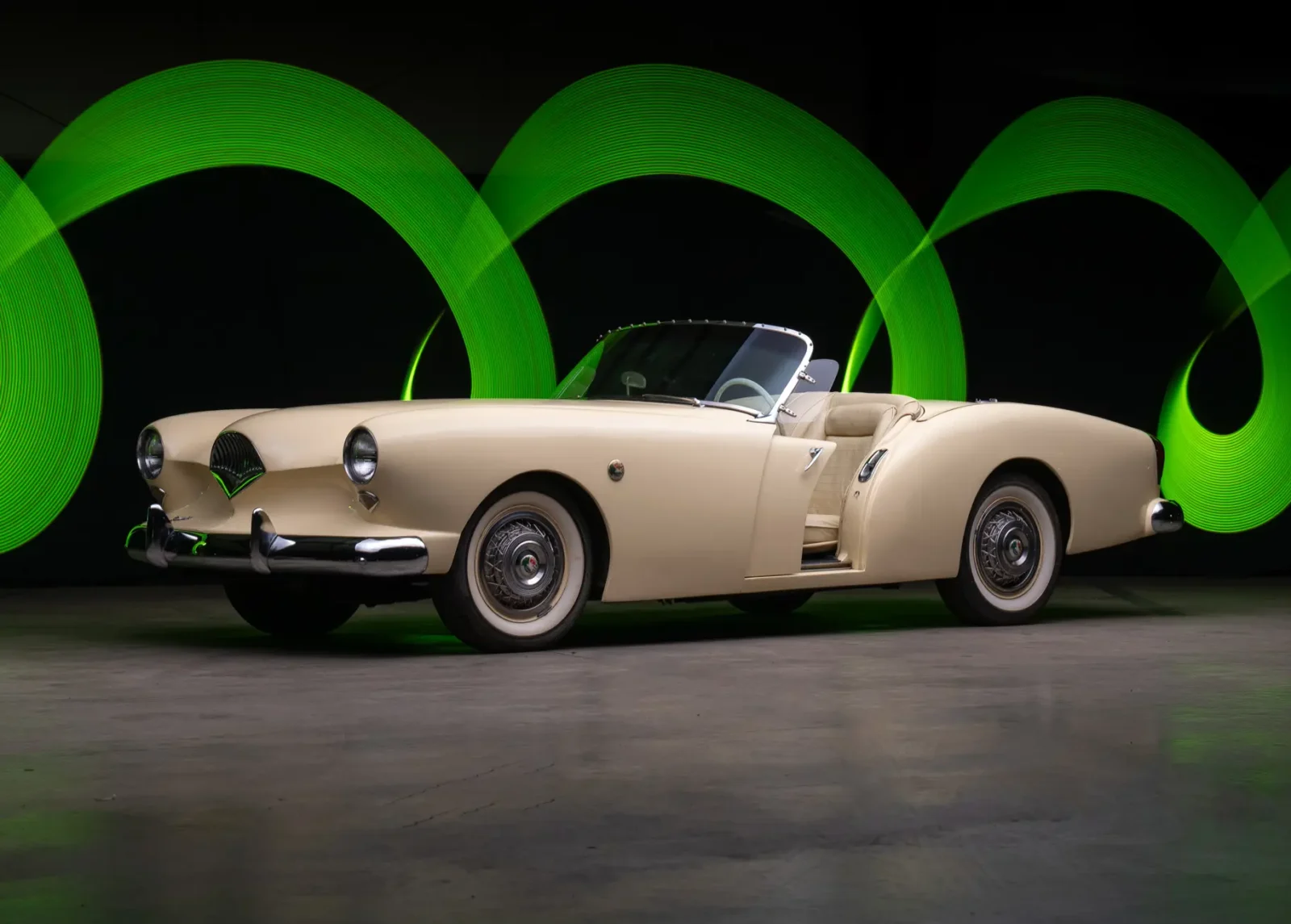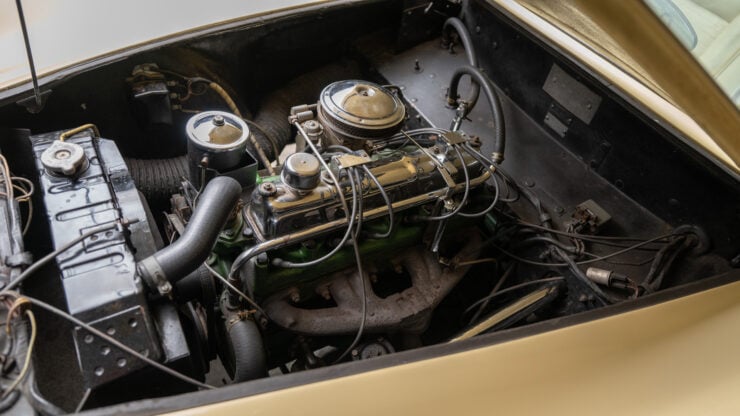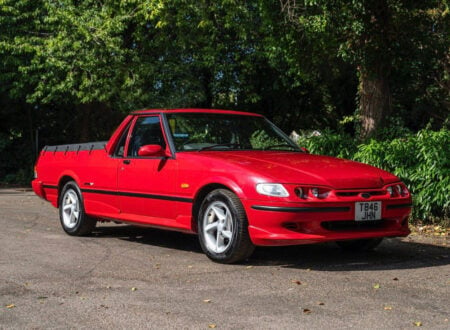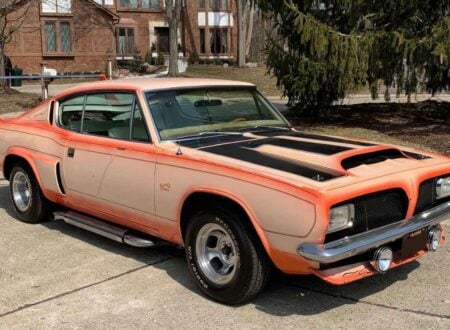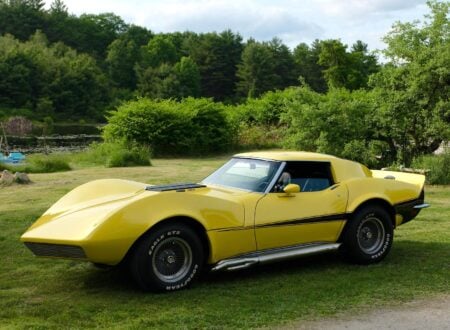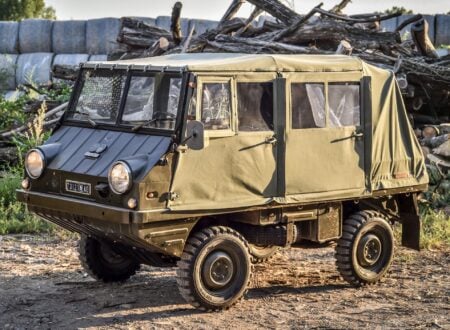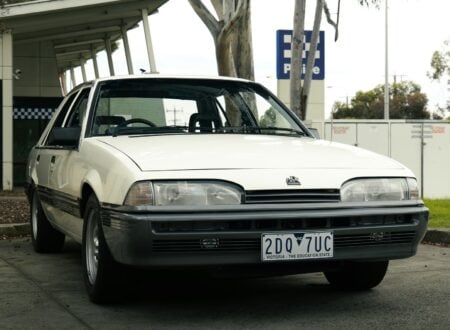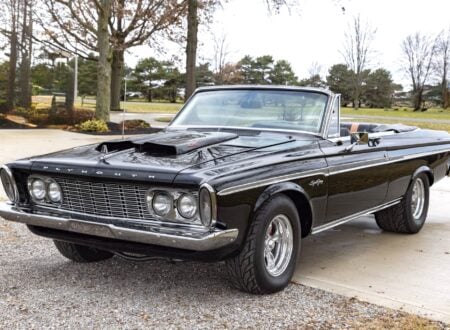The Kaiser-Darrin was one of the early sports cars to enter production in the United States. It was created by Howard “Dutch” Darrin who had been a coachbuilder and designer in Paris during the 1920’s and 1930’s.
The Kaiser-Darrin sports car had the advantage of being designed by a man who had significant experience in creating imaginative and exquisitely made luxury cars in that European setting.
Fast Facts – The Kaiser-Darrin Roadster
- The designer of the Kaiser-Darrin was American Howard “Dutch” Darrin, who was involved in the Hibbard & Darrin carrosserie, and the Fernandez & Darrin coach-building businesses in Paris France.
- “Dutch” Darrin left Paris and returned to the United States where he established his own design house – Darrin of Paris, located on Sunset Boulevard, Hollywood, in 1937.
- Darrin did design work for Packard and others and after the Second World War did free-lance consultancy for Kaiser, and Kaiser-Frazer.
- The idea to create the Kaiser-Darrin sports car was Darrin’s and he did the design work and built the initial prototype in his own time and with his own financing.
- The head of Kaiser, Henry J. Kaiser, was not initially willing to proceed with the Darrin sports car, but his wife persuaded him otherwise and the Kaiser-Darrin entered production in 1954.
The Incredible Story Of The Kaiser-Darrin Roadster
The Kaiser-Darrin roadster can, I think, trace its inspirational roots back to Paris of the 1920’s and 1930’s. The designer of the Kaiser-Darrin was an American named Howard “Dutch” Darrin who had moved to Paris, France where he got together with another American designer, Thomas L. Hibbard.
The two decided that there was a wonderful market for custom coachwork for luxury cars in Paris at that time and together in 1923 they founded their own “carrosserie” coach-building design house Hibbard & Darrin.
Hibbard & Darrin became a respected carrosserie in Paris and those years must have been filled with amazingly creative opportunities, building beautiful coachwork on some of the most expensive and fascinating rolling chassis that have ever existed.
In 1931 Hibbard left France to take up a career opportunity with General Motors leaving Darrin to create a new path of his own. The Great Depression had depressed a great many lives and it had depressed the market for expensive automobiles clothed with beautiful hand crafted coachwork: so Hibbard jumped at getting a secure job with a big company with the deep pockets to survive the Depression years.
Darrin got into a partnership with Argentine born French banker J. Fernandez and formed the Fernandez & Darrin design and coach-building company. Darrin’s creative ideas and his expertise were at such a high level that he was commissioned to create the coachwork for movie star Greta Garbo’s 1933 Duesenberg, and the 1935 Hispano-Suiza H6 for Anthony Gustav de Rothschild among others.
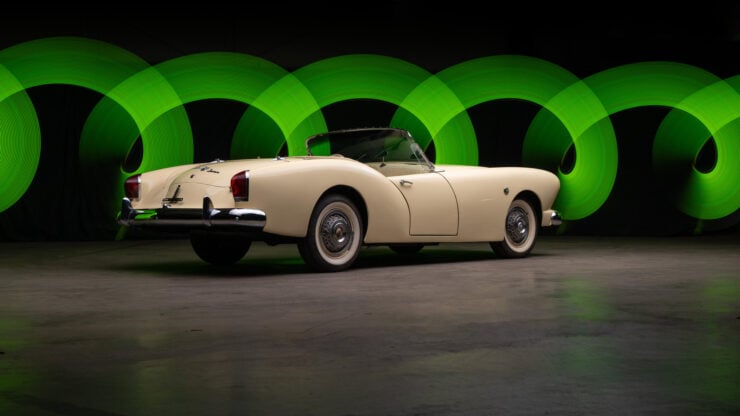

The Fernandez & Darrin business proved to be successful, but despite that Darrin decided to leave all that behind him and move back to the United States in 1937. We can of course make an educated guess as to why he probably made that decision. By 1937 the National Socialist German Workers’ Party (German: Nationalsozialistische Deutsche Arbeiterpartei) was the government of neighboring Germany, and people could see that authoritarian government was going to dramatically transform Europe, and not for the better.
The year after Darrin returned to the United States he would have seen Adolf Hitler anointed as Time magazine’s “Man of the Year” for 1938, and perhaps he hoped that the United States would be able to stay out of the war in Europe that looked certain to occur.
On his return to the USA “Dutch” Darrin moved to California, where there was a healthy population of movie stars and entertainment industry professionals with the cash and desire for beautiful and unique automobiles. There Darrin established his own coachwork business Darrin of Paris, located on Sunset Boulevard, Hollywood – what better place could he have chosen?
Darrin spoke French fluently of course after all his years in Paris and no doubt appeared to his American clientele as an exotic Frenchman with cultivated tastes and European artistic inspiration. His business did well and he created coachwork on the Packard 120 and Packard Clipper. In fact he had sufficient work coming in that he needed to outsource coachwork jobs to American Central Manufacturing in Connersville, Indiana.
Then as the United States geared up for the Second World War that outsourcing was moved to Hess & Eisenhart in Cincinnati because American Central Manufacturing needed to throw their resources into making Jeeps for the US military.
Once the world war was over America returned to peacetime industrial operation and Dutch Darrin obtained design consultancy work for Kaiser-Frazer in 1946. Kaiser-Frazer had been inclined to create an inexpensive car for the average American: an American “people’s car” that was not a Porsche designed Volkswagen.
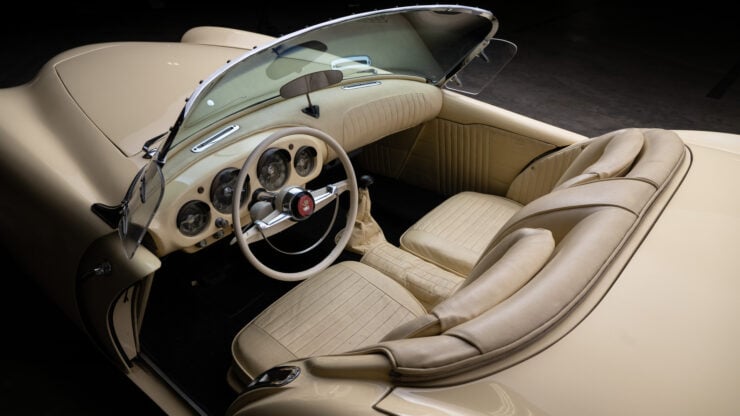

Henry J. Kaiser had begun work on this project in 1942 and assembled a team of “idea men” to come up with a workable concept, and in 1945 as the war ended they had indeed created the K-85 prototype. This car was rather “out of the box” for an American design of that period being a unibody construction, front wheel drive ,with a combination of torsion-bar springs and a torsion-beam rear axle called “Torsionetic Suspension.”
Financing the production in competition with America’s “Big Three”, General Motors, Ford and Chrysler did not look good and so the whole project was given a re-think and the concept changed to create a new model Kaiser car, the Henry J. “Dutch” Darrin was commissioned to do design consultancy work on the Henry J. although his design ideas were simply not utilitarian enough for Henry J. Kaiser and his team of “idea men”.
Nonetheless the Henry J. would become the foundation on which the Kaiser-Darrin sports car would be based.
Darrin had come from the heady environment of building exotic automobile coachwork for exceedingly affluent clients including Hollywood movie stars, and he yearned to move on from the utilitarian Henry J. to create something that would be an exciting “head turner”. He had become quite frustrated in his relationship with Kaiser, he had a vision for bigger and better things and was looking for an opportunity to really demonstrate his artistic and technical talents.
Henry J. Kaiser was not interested in that sort of creativity so Darrin decided to bite the bullet and create a prototype sports car to show what he was capable of, and he chose to base it on a quite unlikely foundation, the chassis of the “American people’s car” the Henry J. The Kaiser Henry J. was a car with decent handling and steering characteristics so it was a reasonable foundation on which to create a stylish sports car – but its engine was under-powered for a sports car.
So, just as Dr. Ferdinand Porsche’s son Ferry had decided to create the first Porsche sports car on the foundation of the Volkswagen, so :”Dutch” Darrin set about creating the Kaiser-Darrin sports car on the foundation of the Henry J – and it was going to be a car for Hollywood movie stars.
Without letting Henry J. Kaiser know what he was doing and at his own expense Darrin set about designing his new sports car, and built a clay model which was completed in the first half of 1952.
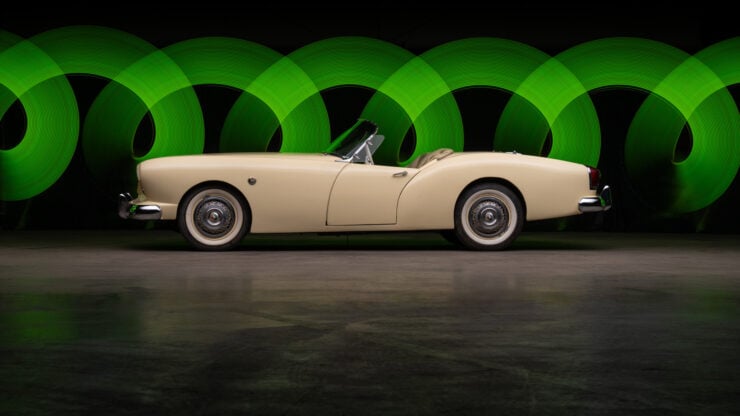

Darrin then approached fiberglass pioneer Bill Tritt to get the body parts made in GRP (Glass Reinforced Plastic) which was vastly cheaper than steel or aluminum, and which was being heavily promoted by the plastics industry. It would be the material that would be used for the bodywork of the Chevrolet Corvette also.
The moment of truth came when the prototype was complete – Darrin invited Henry J. Kaiser to come and look at it, and fortuitously Kaiser brought his wife with him that day.
Henry J. Kaiser was not at all happy with what Darrin had done to one of his pet project cars thinking that Darrin had done it using Kaiser company money and time. When he was told that Darrin had not spent company money on it and had done it in his own time Kaiser settled down, but still insisted that Kaiser was not in the business of making sports cars.
It might have ended there had not Kaiser’s wife admonished her husband and told him that the Darrin creation was the most beautiful car she had ever seen. This stopped Henry J. Kaiser in his tracks. He was shrewd enough to realize that if his wife had just fallen in love with the car then there might just be a market for it.
Kaiser’s wife, I suspect, might have been quietly thinking to herself that her husband might just be persuaded to slip a new Kaiser-Darrin sports car under the Christmas tree for her later that year. I wonder if he did.
Henry J. Kaiser decided to take the risk and put the sports car into production, and he named it the “Kaiser-Darrin”.
Using fiberglass bodywork it was not an expensive car to get tooled up for. The Henry J. chassis needed a little modification so that the car would sit sports car low, suspension spring rates were changed to suit the lightweight bodywork, and the steering ratio was also made sports car responsive. Brakes were drums as used in the Kaiser Manhattan and were as good as drum brakes could be expected to be.
As one would expect some changes were made to Darrin’s prototype design. Vehicle regulations in the United States varied from state to state and so the headlights had to be moved up four inches, and turn indicators were located underneath them.
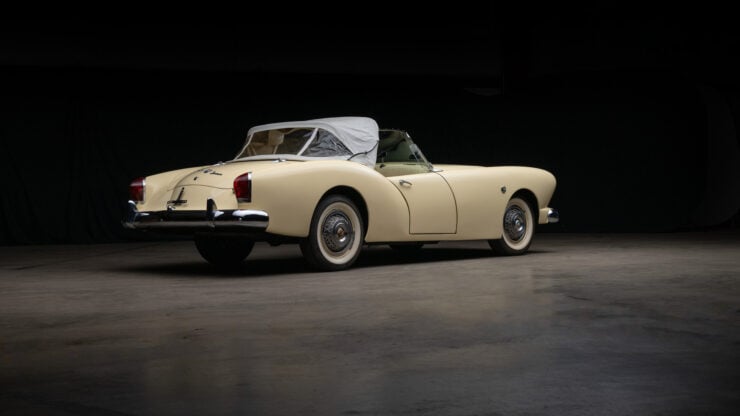

Other changes included separate lids for the boot/trunk and the compartment for the folding canvas top. One of Darrin’s trademark innovations had been a three-position landau soft top that could be partly raised to provide for a reduction in turbulence inside the passenger compartment especially when traveling at highway speeds, and fully raised in the event that full coverage was wanted.
The Kaiser-Darrin’s doors did not have roll-up side windows but instead relied upon side-curtains that rolled down but which were not really efficient at keeping the occupants of the car dry. This was common to sports cars of the time, sports cars then tended to be created for use in sunny California and not for rain, drizzle, sleet or snow.
The absence of roll-up side windows enabled Darrin to fit the Kaiser-Darrin with sliding doors, which he had long been an advocate for, arguing that they were safer because they did not need to be opened out into traffic. These doors slid into compartments behind the front wheels, but this necessitated the doors, and door openings being a tad small for easy entry/exit into the vehicle.
A downside of the sliding doors proved to be that if the tracks they ran on had a small stone lodge onto them that would prevent the door being closed, as it does with any sliding door.
Darrin’s original design for the dashboard was also changed. He had place the car’ instrumentation across the dashboard much as would be found in a 1930’s luxury car. It was decided that a sports car would be better with the instrumentation located directly in front of the driver where everything could be seen at a glance, something that is a great advantage when one is driving enthusiastically.
Darrin’s original design had used a two-piece windscreen and this was also changed to a one-piece windscreen.
Being made of fiberglass the car had to be painted with lacquer paint and was offered in four colors; Champagne Lacquer (white), Red Sail Lacquer, Yellow Satin Lacquer, and Pine Tint Lacquer (green).
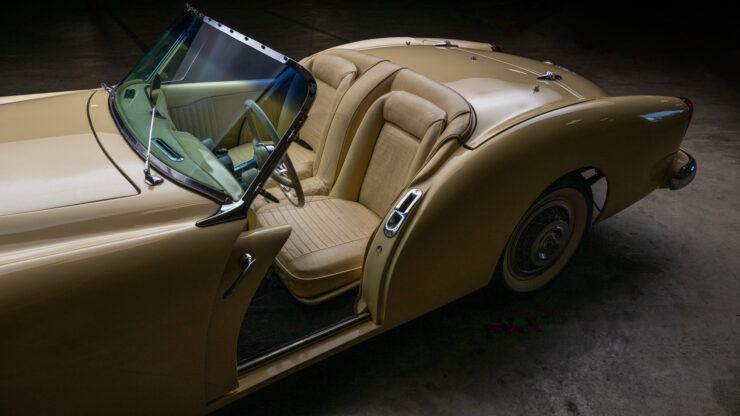

The Kaiser-Darrin was offered with seat belts as an option. Back in the early 1950’s this meant lap belts: lap-sash seat-belts were not invented until 1958 by Swedish engineer Nils Bohlin, and made their first production appearance on Volvo cars in 1959.
The much more difficult problem to solve to make the Kaiser-Darrin a viable sports car was the engine. The four cylinder Henry J. power-plant was just not up to the task despite the best efforts by Kaiser’s engineers to hang triple sporting carburettors on it, give it a new aluminum cylinder head and raise the compression ratio, tweak the camshaft and generally do the things to extract more power. They managed to increase the power by 25hp, but engine reliability was unacceptably poor and the driving experience was far too finicky.
This problem was sort of solved when Kaiser merged with Willys-Overland and obtained their 161 cu. in. six cylinder F-head Willys Hurricane engine. This provided the Kaiser-Darrin with a 90hp power plant and gave a decent driving experience, but not with really competitive performance. The Kaiser-Darrin thus powered was more of a stylish cruising car rather than being a red-blooded sports car. Top speed was 95mph with a standing to 60mph time in around 15 seconds.
The Kaiser-Darrin entered pilot production in August 1953 and full production commenced that December.
Sales of the Kaiser-Darrin were disappointing and ultimately 435 production Kaiser-Darrins were made. Henry J. Kaiser had hoped to make and sell double that number, and production was ended in August of 1954.
The end of official production did not end “Dutch” Darrin’s efforts to continue with the car however. He purchased fifty cars that had been weather damaged by snow and the remaining stock of unsold cars and took them to the sunny climes of Santa Monica where he upgraded cars with McCulloch superchargers and improved carburetors which brought the Kaiser-Darrin’s top speed up to over 100mph and gave the car a standing to 60mph time of around 10seconds.
Six of the Kaiser-Darrins were fitted with 305bhp Cadillac V8 Eldorado engines which turned them into graceful fire-breathing sports cars that would get up to 145mph: this was an indicator of what could have been for “Dutch” Darrin.
As with any “out of the box” creative enterprise a committed “boots and all” approach is normally needed to break through the obstacles to success. Under the corporate control of Kaiser, Darrin’s creativity was not allowed to fully develop. Once he was free from that the project was able to breathe the sweet aroma of success.
But the modified cars he built were expensive – a throw-back to his successful years in Paris building cars on top-shelf rolling chassis in the fabulous “Roaring Twenties”.
The car is finished in the Yellow Satin paint scheme and has the Darrin three-position landau top in white. In Hollywood style the car has whitewall tires with color matched wheels decorated with factory wire wheel covers.
The sale car is powered by the Willys’ “Hurricane” inline six-cylinder engine breathing via a Carter YF carburetor. This engine sends its power to the rear wheels via a three speed manual gearbox.
The Kaiser-Darrin is a car with a fabulous history, tracing its roots back to Howard “Dutch” Darrin’s artistry cultivated in Paris, France, and imported to the United States. The Kaiser-Darrin was his ultimate project, a wonderful expression of a committed automotive artist.
A production Kaiser-Darrin made in 1954 with production number 99 is coming up for sale by RM Sotheby’s at their 2024 Monterey auction which will be held between 15-17 August. You can find the sale page for this car here.
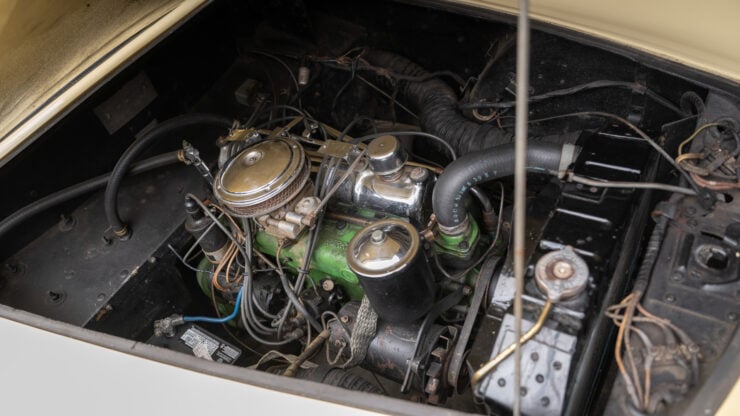
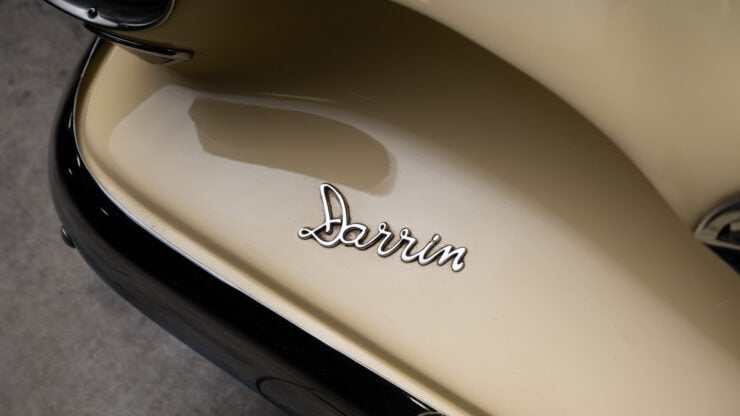
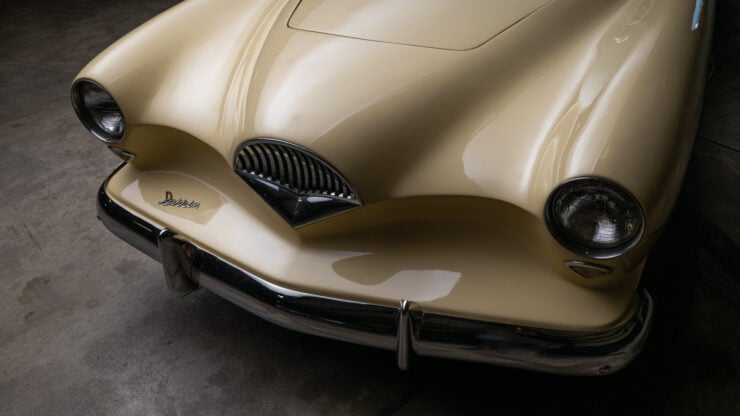
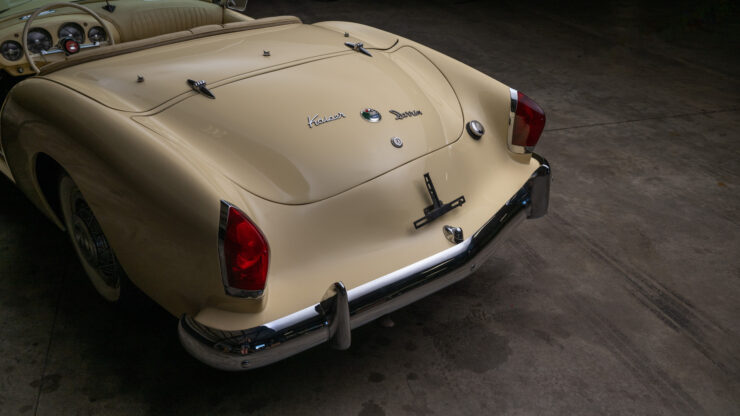
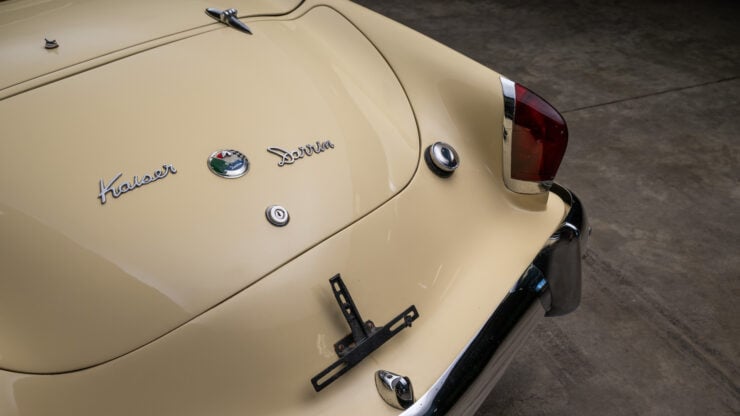
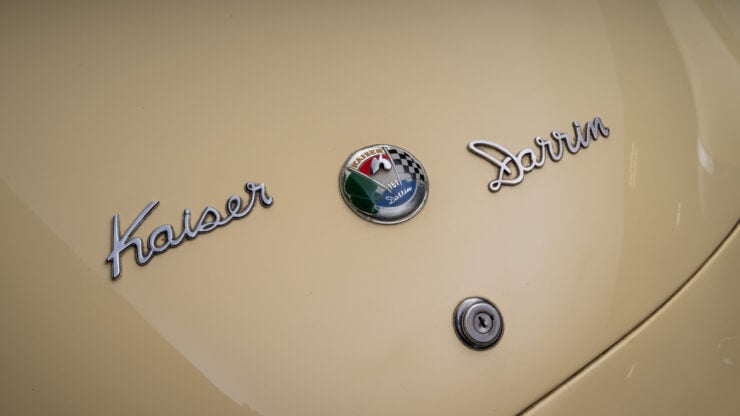
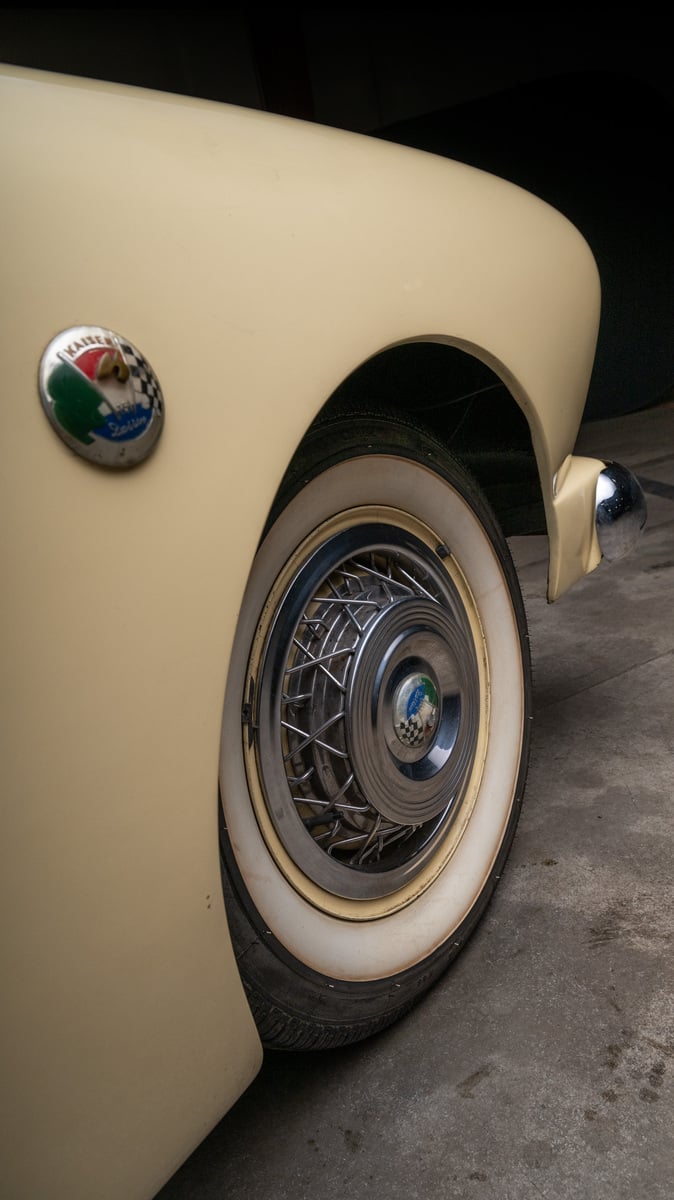
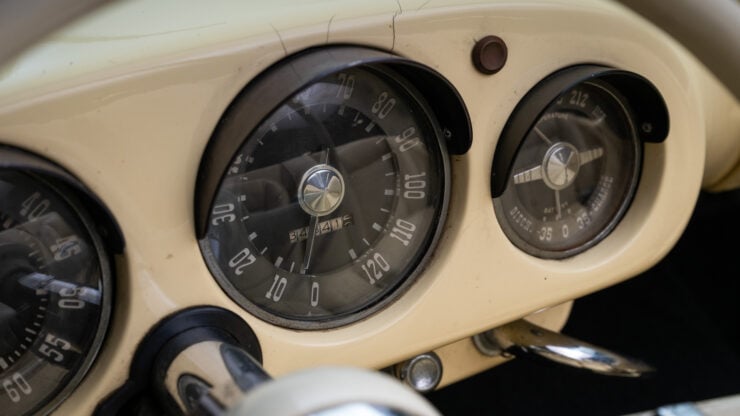
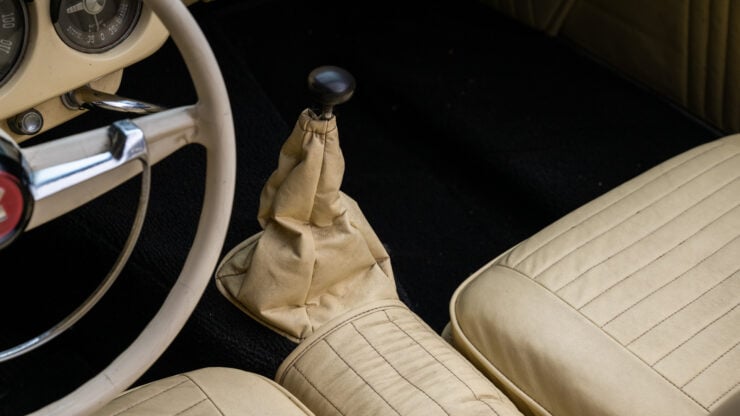
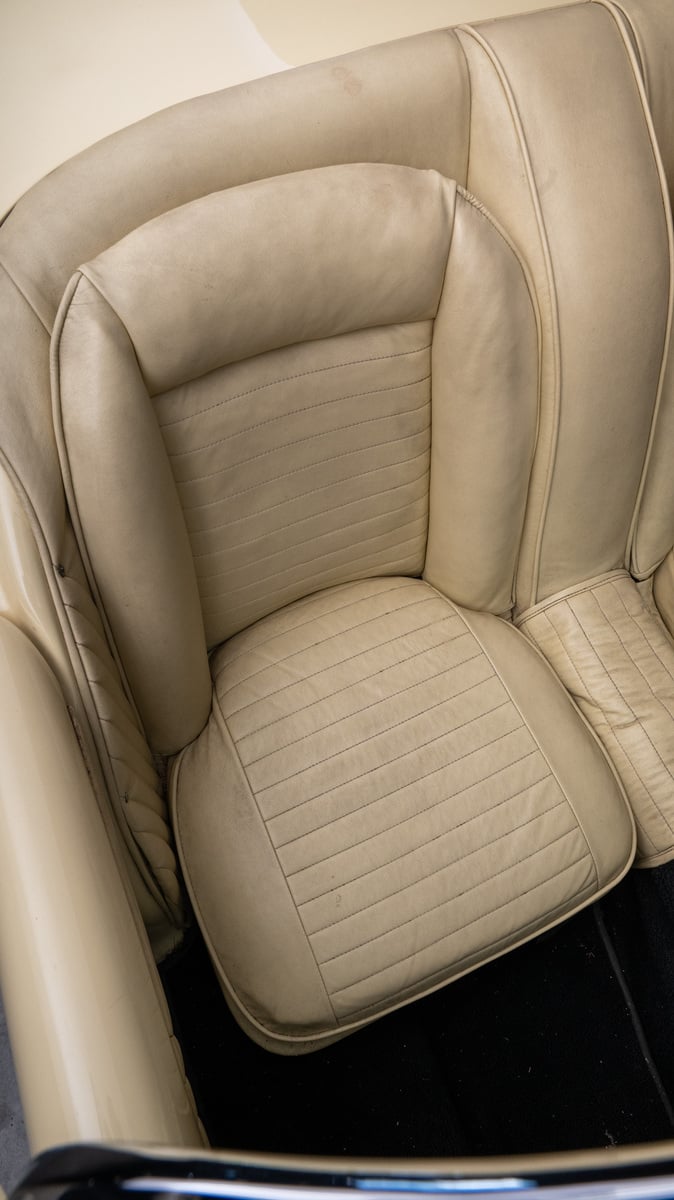
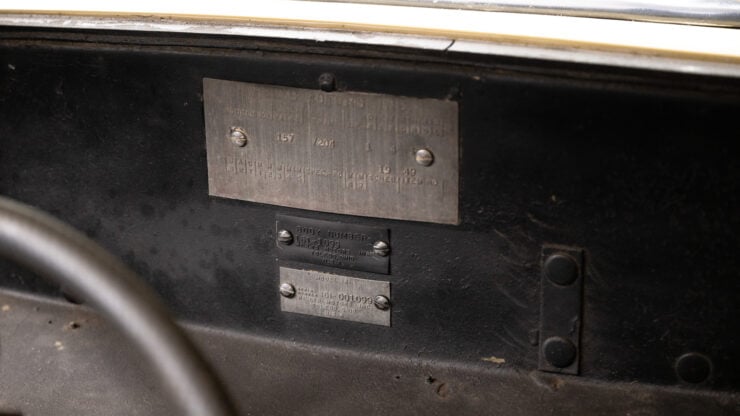
Picture Credits: All pictures Darin Schnabel ©2024 Courtesy of RM Sotheby’s.

